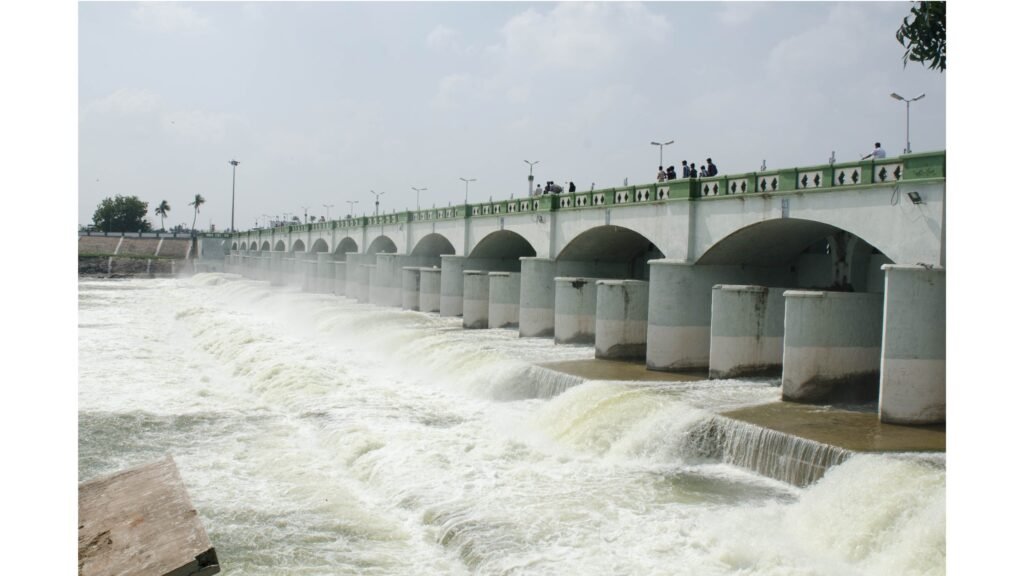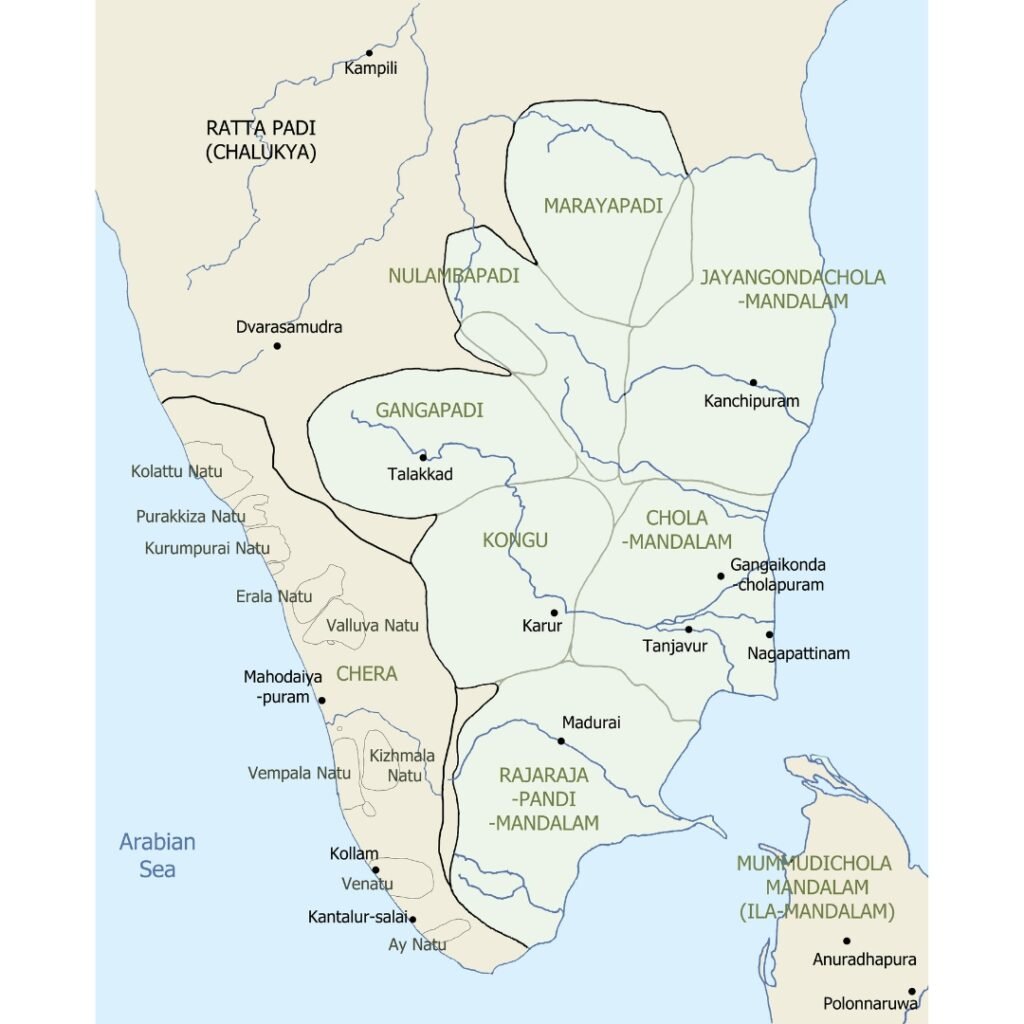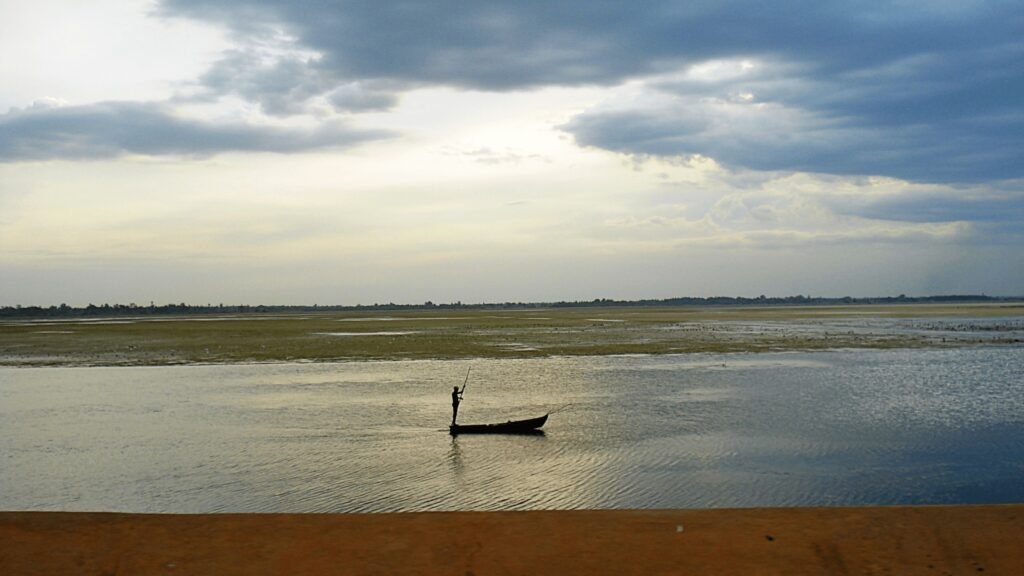The release of Ponniyin Selvan the film has once again stirred much interest about Rajaraja Chola – known to be one of the greatest kings in Indian history. But Rajaraja wasn’t the only great Chola king. The Chola dynasty routinely churned out high achievers and superstars. Much of what we know about them is thanks to a set of ancient Tamil texts – the Sangam period literature.
While it is difficult to filter out cold hard facts in literature, which as you know, can be laced with exaggerations and flights of fancy…sometimes, historians have been able to corroborate the information about the Cholas by checking other sources – the works of Greek authors like Ptolemy, for instance, Sri Lankan chronicles, and even the inscriptions of the Mauryan emperor Ashoka.
Let us introduce you to some of the other remarkable rajas of the Chola dynasty!
Karikalan, the ‘Dam’ Good King
There were many reasons why the Cholas were so successful. One of them was their attention to…irrigation. Around the second century BCE, much of the Kaveri river flowed wastefully into the sea. One Chola king, Karikalan, is said to have erected a bunch of massive stone boulders across the gushing river, and created a dam. It was called Kallanai, meaning ‘stone dam’. It was 329 metres long and 60 metres wide. For those times, this was cutting-edge technology – and an effective drought prevention measure. The excess water from the Kaveri flowed into a man-made reservoir system. No more wastage of water! The Kallanai is perhaps the oldest functional dam in the world! And its builder was a ‘dam’ good king, don’t you think?

Manu Needhi Cholan, Man of Steely Justice
If King Karikalan’s pet project was dams, King Ellalan’s claim to fame was his commitment to justice. Around 205 BCE, Ellalan invaded a Srilankan kingdom and ruled from there for 44 years. A story in the Srilankan Buddhist chronicle Mahavamsa says that once when the king was driving his chariot, its axle accidentally damaged the walls of a Buddhist shrine. Now Ellalan was a Hindu, but he was so stricken with remorse that he ordered his ministers to execute him! His ministers convinced him that even Buddha wouldn’t recommend such a harsh punishment.
According to a Tamil literary work, Ellalan got his own son executed for rash driving. The prince’s chariot had run over a calf. Now, such stories are probably literary exaggerations, but they do indicate that the king delivered equal justice irrespective of race, religion or relationship. And that’s why he came to be known as Manu Needhi Cholan. It roughly translates to ‘the deliverer of justice as per the scriptures’. This king was so admired that when he was finally killed in battle, the enemy king actually built a monument to honour him!
Vijayalaya, Founder, the Imperial Cholas
Even great dynasties can have bad days…well, centuries. The Cholas too had a dark age – theirs was between 300 and 600 CE. During that time the whole of Tamil Nadu was ruled by a little-known dynasty called the Kalabhras, while the more famous Cholas, Cheras and Pandyas were reduced to small vassal kings. Finally, the Pandyas and the Pallavas managed to knock the Kalabhras out of the ring, but then they started fighting with each other for the upper hand. The Cholas at this moment were…not doing much. Finally around 840 CE, a Chola king named Vijayalaya decided that he was not going down in history as a forgotten ruler. This ambitious king allied with the Pallavas and helped them rout the Pandyas. And he captured the fertile Thanjavur region from the Pandyas. His son Aditya I (not the Aditya Karikalan from Ponniyin Selvan) then overthrew the Pallavas as well. The Cholas had started their empire-building. And it was King Vijayalaya who had set the ball rolling.
Rajendra I, the Greatest Chola
If you loved the movie Ponniyin Selvan, you probably think that Rajaraja was the greatest Chola king. Rajaraja was great, but his son Rajendra was perhaps greater. Even during his father’s rule, Rajendra led many military campaigns as commanding officer. After he became king, he completed his father’s unfinished business – the conquest of southern Sri Lanka. It became a Chola colony in 1018. His blue water navy had defeated kingdoms in Maldives, Burma, Malaya, Indonesia and by 1025 and made them tributaries. He defeated the east Indian kingdoms of Pala (Bengal) and Kalinga (Odisha). He built a brand new capital at Gangaikonda Cholapuram. There, he created a huge artificial lake with water from the Ganga river; Ponneri lake is one of the largest manmade Indian lakes even today. The Brihadeeswara temple that he built in the capital is a UNESCO World Heritage Site. The Chola empire was the largest during his rule.
Detour: Watch this short video for more on Rajendra Chola
Kulothunga I, the Half-Chola
In 1070 CE, barely a couple of decades after the death of the mighty emperor Rajendra I, King Athirajendra, his inept grandson, was killed in religious riots. The Chola empire was tottering because there was no credible leader at the helm. That’s when a sidelined Vengi prince named Rajendra Chalukya sprang to action. His mother was a Chola princess and Rajendra, his maternal grandfather, so he had some Chola blood in him. He had once valorously led Chola armies in the Malay Archipelago, but now he was just a petty king in the Bastar region. He quickly recaptured Vengi and then the Chola capital itself, and crowned himself Kulothunga Chola. He foiled the attacks of the southern Chalukyas and Kalingas and recaptured Chola territories in Karnataka and Orissa. He crushed Pandya and Chera rebellions and established peace. Then he did something counterintuitive: he abolished customs duties in all Chola ports. International trade, particularly from the Far East boomed! The empire became even more prosperous. That was how a half-Chola restored the full glory of the Chola empire!








